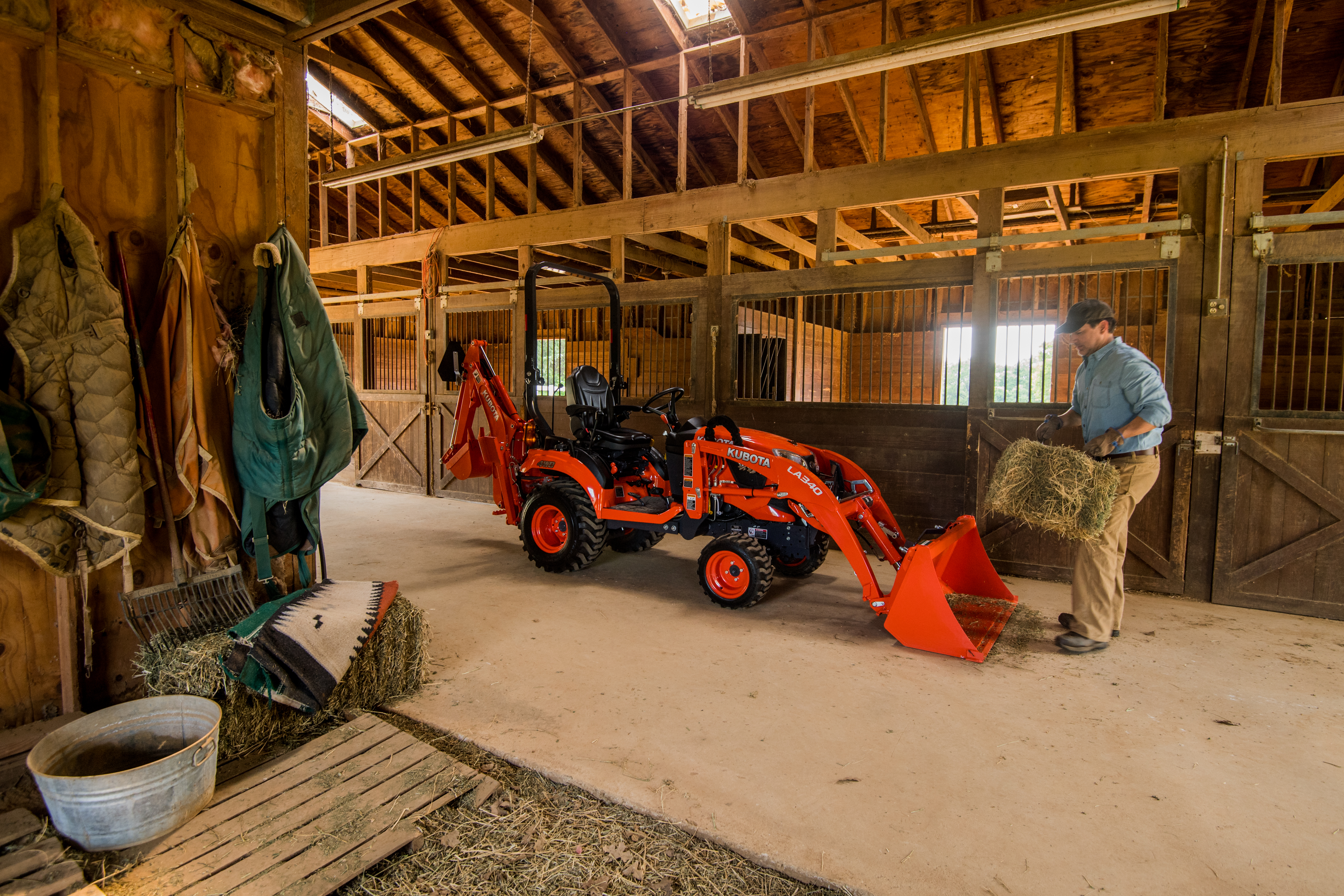
Whether you call them hobby tractors, utility tractors or subcompact tractors, small diesel tractors are becoming increasingly popular around horse farms. Versatile and affordable, they take up little space—yet pack a surprising amount of power. Here are some factors to consider before buying:
What tasks do you need to accomplish?
Consider the work a tractor could perform around your farm—and the attachments needed to perform it. Many horse owners rely on small tractors to clean stalls and carry hay or straw. They’re also perfect for pulling wagons with bags of shavings, jump equipment or rations for field boarders.
Attach a manure spreader or chain harrow, and your small tractor can fertilize fields, spread manure in paddocks or level arena footing. A mower attachment helps keep fields and paddocks in order, with mid-mount and drive-over options offering different advantages. Come winter, attach a snow blower or blade to keep your facility functional. Seasonal use of an aerator attachment breaks up compacted ground and improves grazing. Posthole diggers, backhoes and box scrapers can help you install fencing, build that addition or excavate a new arena.
If you anticipate long hours on your tractor, you might appreciate a heated cab, adjustable seat or cruise control. Rollover protection with low clearance enhances storage capability.
What size engine do you need, and what type of transmission?
For many farm applications, a 3-cylinder diesel engine with a gross horsepower (HP) of at least 20 provides sufficient muscle. A hydrostatic transmission is ideal for constant speed and direction changes within small spaces.
How about drive method and lift capacity?
Four-wheel drive provides agility over rough terrain, and a power take-off (PTO) rating of at least 15 is recommended. Looking to lift things? A loader capacity of at least 400 pounds offers plenty of heft.
In what size spaces and over what types of terrain will you be operating?
Compare the dimensions of your barn doors and aisles with the dimensions of the small tractors you’re considering (including attachments). Subcompacts allow you to maneuver around landscaping, fences and buildings with ease. They’re also tight-turn specialists; look for a turn radius of about 7.5 feet without brake. Will you be working over hills, rocks or mud? Check the ground clearance, and compare industrial, turf or bar tires for different terrains.
How experienced are you with tractors?
If you’ve driven garden tractors—or even if you haven’t—it’s not difficult to learn to drive a subcompact tractor. Some models are more novice-friendly than others, however. Look for easy-to-read dash panels, good customer service reviews and systems that allow you to attach and detach implements quickly and by yourself.
As with any major purchase, there’s a lot to consider. But with so much to recommend them, it’s clear why subcompacts are the tractor of choice on many horse farms.
Reliability, performance and versatility. No matter the size of the project, whether you’re moving feed or just cutting your lawn, Kubota will never let you down. www.kubotausa.com






